Sagada, Philippines
Professor Brian Cox
What is Life?
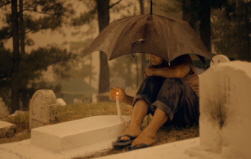
Graveyard, Sagada
I've come to one of the most isolated regions of the Philippines to visit the remote hilltop town of Sagada. It's a two day drive from the capital,
Manila, over some of the country's roughest roads that wind their way 1,500 m up into the hills.
This is a place where the traditional belief is that mountain spirits give us life and that our souls return to the mountains when we die… and where
the people who live here still imagine that the spirits of the dead walk among the living.
Tonight is November 1, and here in Sagada – in fact across the Philippines – that means it's the Day of the Dead. That's the day when people come to
this graveyard on a hillside and, well, celebrate the lives of their relatives.
The people light fires to honour and warm the departed, inviting their souls to commune with them.
So, no matter how unscientific it sounds, this idea that there's some kind of soul or spirit or animating force that makes us what we are and that
persists after our death is common.
Virtually every culture, every religion, has that deeply-held belief. And there is a reason for that – because it feels right. I mean, just
think about it. It's hard to accept that when you die you will just stop existing and that you are, your life, the essence of you, is just really
something that emerges from an inanimate bag of stuff.
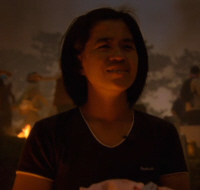
Filipino Lady
Filipino lady "I believe that their spirits are around us I know that they are near. That they have a second life. We talk to them silently…"
You can see that these people feel. Not only do they come to celebrate the lives of their relatives, but they are coming in some sense to
communicate with them. Their relatives, even though their physical bodies have died, are still in some sense here. When you think about it,
that's not so easy to dismiss. If we are to state that science can explain everything about us, then it's incumbent on science to answer the
question, what is it that animates living things? What is the difference between a piece of rock that is carved into a gravestone and me?
For millennia, some form of spirituality has been evoked to explain what it means to be alive, and how life began. It's only recently that
science has begun to answer these deepest of questions.
In February 1943, the physicist Erwin Schrodinger gave a series of lectures in Dublin.
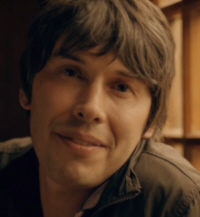
Professor Brian Cox

What is Life, Erwin Schrodinger
Now, Schrodinger is almost certainly most famous for being one of the founders of quantum theory. But in these lectures, which he wrote up
in this little book, he asked a very different question – What Is Life? And right up front, on page one, he says precisely what it isn't. It
isn't something mystical, says Schrodinger. There isn't some magical spark that animates life. Life is a process. It is the interaction between
matter and energy described by the laws of physics and chemistry. The same laws that describe the falling of the rain or the shining of the stars.
So, the question is, how is it that this magnificent complexity that we call life could have assembled itself on the surface of a planet which
itself formed from nothing more than a collapsed cloud of gas and dust?
To Schrodinger, the answer had to lie in the way living things process one of the universe's most elusive properties – energy.
Energy is a concept that is central to physics, but because it's a word we use every day its meaning has got a bit woolly. I mean, it's easy to
say what it is in a sense.
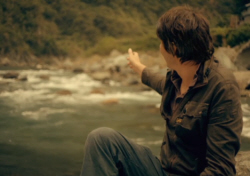
Energetic River
Obviously this river has got energy because over decades and centuries it's cut this valley through solid rock. But while this description sounds
simple, in reality things are a little more complicated.
For me, the best definition is that it's the length of the space time four vector and time direction, but that's not very enlightening, I'll grant you that.
Over the years, the nature of energy has proved notoriously difficult to pin down. Not least because it has the seemingly magical property that it
never runs out. It only ever changes from one form to another.
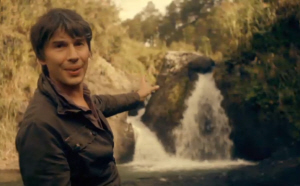
Waterfall, Gravitational Potential Energy
Take the water in that waterfall. At the top of the waterfall, it's got something called gravitational potential energy, which is the energy it
possesses due to its height above the Earth's surface.
See, if I take some water out of the river into this beaker, then I'd have to do work to carry it up to the top of the waterfall. I'd have to
expend energy to get it up there. So it would have that energy as gravitational potential. I can even do the sums for you. Half a litre of water
has a mass of half a kilogram, multiplied by the height, that's about 5 m, the acceleration due to gravity is about 10 m/s squared. So that's half
times five times ten is 25 joules. So I'd have to put in 25 joules to carry this water to the top of the waterfall. Then if I emptied it over the
top of the waterfall, then all that gravitational potential energy will be transformed into another type of energy.
Its sound, which is pressure waves in the air. There's the energy of the waves in the river. And there's heat. So it'll be a bit hotter down
there because the water's cascading into the pool at the foot of the waterfall. But the key thing is energy is conserved, it's not created or destroyed.
So, because energy is conserved, if I were to add up all the energy in the water waves, all the energy in the sound waves, all the heat energy at
the bottom of the pool, then I would find that it would be precisely equal to the gravitational potential energy at the top of the falls.
What's true for the waterfall is true for everything in the universe. It's a fundamental law of nature, known as the first law of thermodynamics.
And the fact that energy is neither created nor destroyed has a profound implication. It means energy is eternal.





